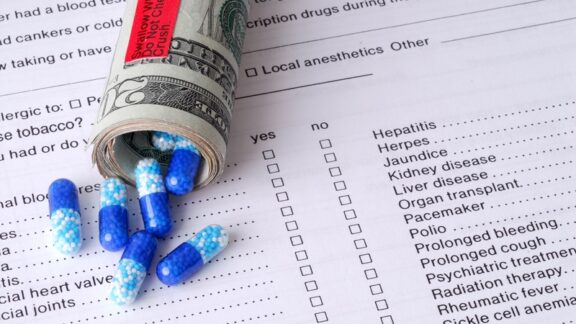In the later decades of life, age-related muscle loss is common – practically inevitable. Dr. Howard LeWine explains the importance of protein to combat muscle loss and how to help ensure you’re getting enough.
Question: I am worried about losing muscle mass now that I am in my 60s. How much protein do I need to help prevent it?
Answer: Age-related muscle loss, called sarcopenia, is a natural part of aging. Sufficient protein intake and strength training are two ways to maintain muscle mass and combat sarcopenia.
Many people, even at younger ages, don’t get their optimal daily protein intake, especially if they also are cutting calories to lose weight.
The Recommended Dietary Allowance (RDA) of protein is 0.8 gram per kilogram of body weight, or about 0.36 gram per pound. However, most experts suggest greater daily dietary protein intake than the RDA, 1.0 to 1.2 grams per kilogram of body weight (about 75 grams per day for a 150 pound person). People trying to regain muscle mass after an injury or illness should aim for even more, up to 1.6 grams per kilogram of body weight, but no more than 2.0.
The body can make use of only 20 to 30 grams of dietary protein at one time. So there is no benefit from getting most of your daily protein from one meal. Instead, try to evenly distribute your protein over breakfast, lunch, dinner, and snacks.

It’s important to get a realistic estimate of how much protein you consume daily. People tend to over- or underestimate how much protein they actually eat. Track your protein intake with each meal for a week to get a daily average. Read labels and assess your protein per serving as accurately as possible, rather than guessing at amounts.
Once you have a general idea of your usual intake, you can adjust it as needed. Your protein should focus on high-quality food sources, like lean poultry, fish, dairy, and plant-based foods, such as soy, legumes, nuts, and whole grains.
Another option is whey protein powder or vegan powders made from soy, peas, or brown rice. They can be added to oatmeal and smoothies or stirred into a glass of water. Because powders come with measuring scoops, they can help you track how many protein grams you add to your daily diet.
In addition to sufficient protein intake, maintaining muscle mass also requires two to three sessions per week of strength training. To help maximize muscle growth and improve recovery, consume a portion of your daily protein within 30 minutes to one hour after your strength training workout, through either a drink or snack.
Related: Five Foods to Add Protein to Your Diet
Howard LeWine, M.D. is an internist at Brigham and Women’s Hospital in Boston and assistant professor at Harvard Medical School. For additional consumer health information, please visit www.health.harvard.edu.
©2025 Harvard University. For terms of use, please see https://www.health.harvard.edu/terms-of-use. Distributed by Tribune Content Agency, LLC.




